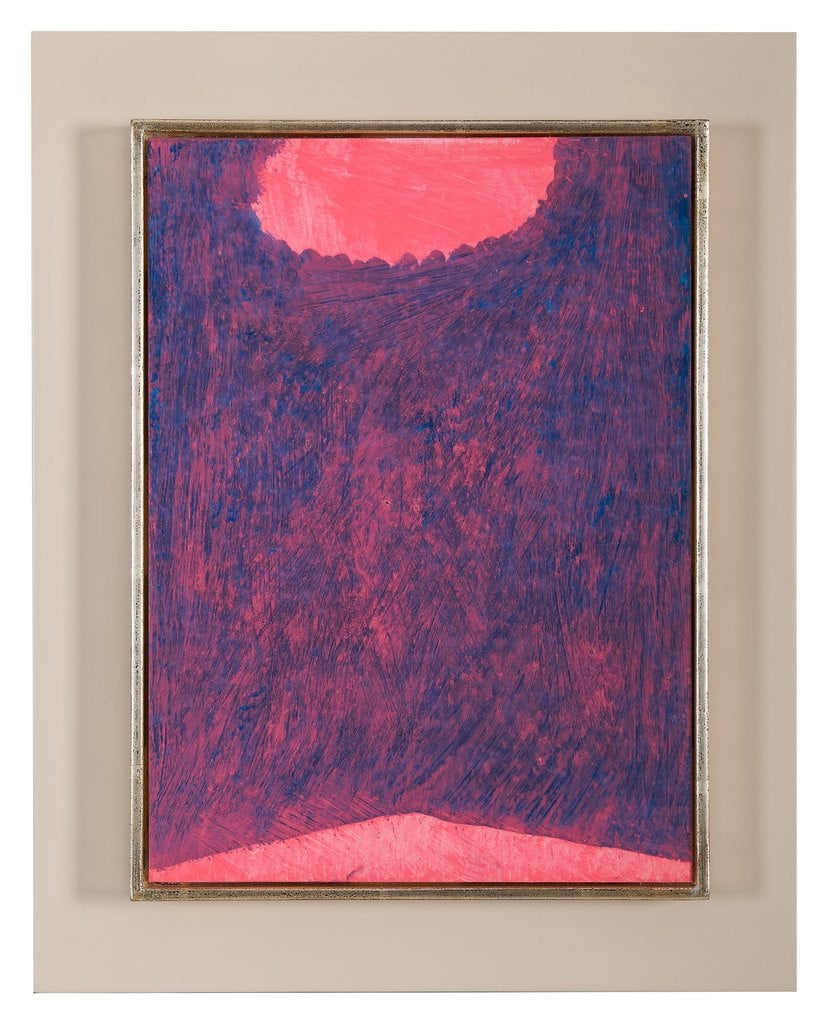
Every month, hundreds of galleries add newly available works by thousands of artists to the Artnet Gallery Network—and every week, we shine a spotlight on one artist or exhibition you should know. Check out what we have in store, and inquire for more with one simple click.
About the Artist: Max Ackermann (1887–1975) was a German painter and graphic designer pivotal in the turn-of-the-century artistic shift from representational imagery to abstraction. Though his work remains known mostly in academic circles, Ackermann is believed to have predated even Kandinsky in his turn toward full abstraction, with Ackermann making this transition as early as 1905. A new exhibition at Bode Galerie in Nuremberg, “Max Ackermann and the Informel,” contextualizes Ackermann’s works, not in terms of these early revelations, but within the gesturally-driven Art Informel movement as it developed in Germany. The exhibition is accompanied by a comprehensive publication with an essay by art historian Dr. Nicola Carola Heuwinkel.
Why We Like It: “Max Ackermann and the Informel” brings to light a largely overlooked portion of the artist’s oeuvre, from the 1930s into the 1960s. Eschewing distinct forms, these jubilant, energetic works instead possess an experimentally diffuse focus with a lyrical sense of wit and visual play. Many of these works were totally unknown until curators began research for Ackermann’s 2003 retrospective “In Search of the Whole“ at the Zeppelin Museum Friedrichshafen. Unlike his highly structured early abstractions, these works are more experimental—filled with dripped passages, smudges of paint, and even impasto mixed with paints. As is typical of Ackermann, his use of color is decidedly joyful (especially compared to his contemporaries) and marked by bright greens, pinks, and tranquil passages of blues.
According to the Gallery: “In our current exhibition, Bode Galerie presents a ‘new’ Max Ackermann and shows his works in the context of the Informel of the 1950s in Germany. By the 1930s, Ackermann had developed a loose and spontaneous visual language, building the artistic basis for Art Informel, which emerged more than a decade later. An art-historical consideration of Max Ackermann’s contributions to Informel has never been concretized until now.”
Browse works by the artist below.
Ohne Titel (Strukturen) 1969
Inquire for More Information
Max Ackermann, Ohne Titel (Strukturen) 1969 (1969). Courtesy of Galerie & Edition Bode.
Ohne Titel (1959)
Inquire for More Information
Max Ackermann, Ohne Titel (1959). Courtesy of Galerie & Edition Bode.
An die Freude (ca. 1960)
Inquire for More Information
Max Ackermann, An die Freude (ca. 1960). Courtesy of Galerie & Edition Bode.
Verwehte Zeichen 1938 (1960)
Inquire for More Information
Max Ackermann, Verwehte Zeichen 1938 (ca. 1960). Courtesy of Galerie & Edition Bode.
“Max Ackermann and the Informel” is on view at Galerie & Edition Bode, Nuremberg, and is on view through July 26, 2022.